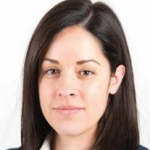Poly- and perfluoroalkyl substances (PFAS) are a large heterogeneous group of chemicals consisting of several hundred different structures. PFAS are used in various applications, due to their stability and water/lipid repellent properties. PFAS can be used in the production of non-stick cookware, stain-resistant products or paper fast-food packaging. However, because of their persistence and bioaccumulation, these substances are omnipresent in the environment. Unfortunately, many of them present concern for human health. Therefore, food packaging testing should be done to monitor for PFAS.
PFAS could end up in the human body through various sources, but one major pathway is through food consumption.1 Correspondingly, in recent years a lot of focus was also put on food packaging testing for the analysis of PFAS.
Recently some PFAS have begun being regulated or phased out. Only a few of the substances have been risk assessed by the European Food Safety Authority (EFSA) and the US Environmental Protection Agency (EPA).2,3 There are various regulatory initiatives that specify acceptable limits of some PFAS; however, these are mainly imposed for environmental matrices.
Currently, more than 5,000 different PFAS are present on the market, with different physical and chemical properties. Furthermore, there are numerous precursors, many with unknown structures, making their analytical determination quite challenging.
In this webinar, the featured speaker will give a general overview of current findings of PFAS in food packaging. Additionally, the targeted approach for detecting and quantifying PFAS in paper and board matrices using high-performance liquid chromatography coupled with triple quadrupole mass spectrometry (HPLC-QQQ-MS) will be presented. Furthermore, the possible challenges associated with PFAS analysis and potential solutions will be discussed.
The model presented in this webinar could lead to an establishment of a simple and efficient method for PFAS quantification. This method could be used to monitor PFAS in paper-based food contact materials that are currently available in the market.
References
- Jain, R. B., Contribution of diet and other factors to the levels of selected polyfluorinated compounds: data from NHANES 2003-2008. International journal of hygiene and environmental health 2014, 217, 52–61.
- European Commission, Order on food contact materials and on provisions for penalties for breaches of related EU legislation.
- US EPA, PFAS Laws and Regulations | US EPA https://19january2021snapshot.epa.gov/pfas/pfas-laws-and-regulations_.html (accessed 10/14/2021 15:55:57).
Speaker

Milica Jovanovic, MSc, Institute for Analytical Chemistry and Food Chemistry, Graz University of Technology, Austria
Milica Jovanovic is doing her PhD studies at the Institute for Analytical Chemistry and Food Chemistry at the Graz University of Technology, Austria. Her main research area is the analysis of per- and polyfluoroalkyl substances in food contact materials using liquid chromatography coupled with triple quadrupole mass spectrometry.
Who Should Attend?
Senior professionals who are:
- Food Safety Testing Chemists
- Food Safety Laboratory Managers
- Packaging Producers
- Processed Food Manufacturers/Producers
- Food Manufacturers/Producers
- Food Supply Chain Professionals
What You Will Learn
- An overview of current findings of PFAS in food packaging
- A method to detect and quantify PFAS in paper and board matrices using mass spectrometry
- The possible challenges associated with PFAS analysis, and potential solutions
Xtalks Partner
Restek
Founded in 1985, Restek is a leading developer and manufacturer of chromatography columns, sample preparation and collection products, reference standards, and instrument accessories. Restek works with analysts around the world, providing them with tools to monitor the quality of air, water, soil, foods, botanicals, pharmaceuticals, and chemical and petroleum products.
Located in offices around the globe, Restek’s unique perspectives strengthen the organization, but some things are the same no matter where you live or how you choose to engage with Restek. Wherever you are, Restek is ready to build a long-lasting partnership with you and your lab, through top-quality products backed by expert education and superior technical service.
You Must Login To Register for this Free Webinar
Already have an account? LOGIN HERE. If you don’t have an account you need to create a free account.
Create Account
